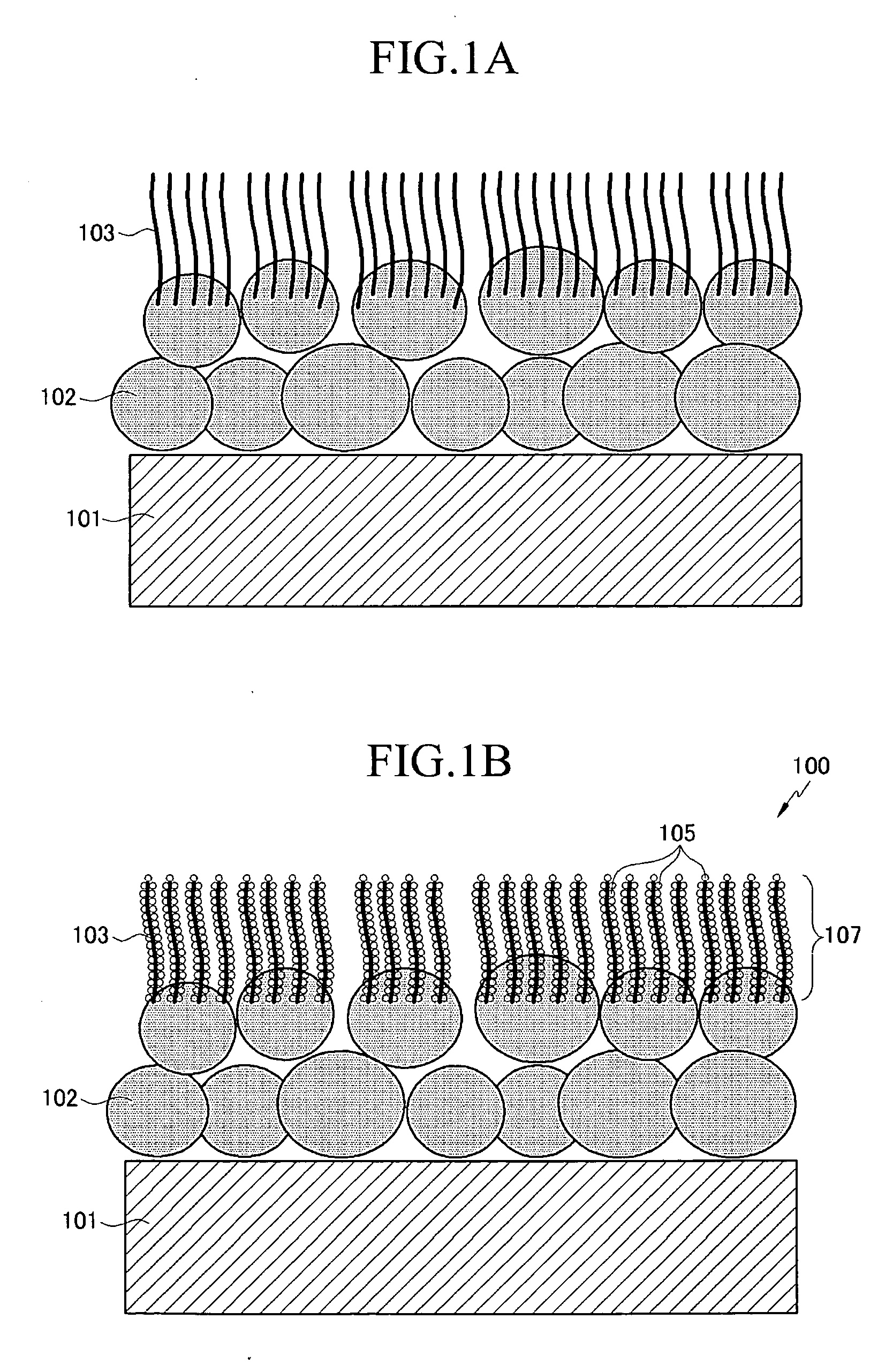Electrode for fuel cell, fuel cell comprising the same, and method for preparing the same
a fuel cell and electrode technology, applied in cell components, electrochemical generators, coatings, etc., can solve the problems of increasing the thickness reducing the reaction reducing the efficiency of the catalyst layer, so as to achieve the effect of improving the reaction efficiency and large surface area
- Summary
- Abstract
- Description
- Claims
- Application Information
AI Technical Summary
Benefits of technology
Problems solved by technology
Method used
Image
Examples
example 1
[0086] 3 g of carbon black, 0.2 g of polytetrafluoroethylene (PTFE), and 20 g of water as a solvent were mixed to prepare a composition. The composition was coated on a 200 μm-thick carbon cloth that was treated with PTFE to form a microporous layer. On the surface of the microporous layer, Fe as a first catalyst was dispersed in an amount of 0.02 mg / cm2 by sputtering. The Fe-dispersed carbon cloth was placed on a quartz boat of a reactor mounted with a microwave generator. Acetylene gas as a carbon source and argon gas were introduced into the reactor at room temperature for 20 minutes to grow carbon nanotubes having a diameter of about 10 nm and a length of about 2000 nm. The microwaves were controlled to irradiate the Fe selectively to heat it locally.
[0087] On the surface of the carbon nanotubes, Pt was deposited to fabricate an electrode. The electrode was dipped in 20 wt % of nitric acid for 2 hours to remove the remaining Fe. The fabricated electrode had a Pt content per uni...
example 2
[0089] A fuel cell was fabricated by the same method as in Example 1, except that Ni was used as a first catalyst.
example 3
[0090] A fuel cell was fabricated by the same method as in Example 1, except that carbon nanofibers were grown as the nano-carbon instead of the carbon nanotubes.
PUM
| Property | Measurement | Unit |
|---|---|---|
| thickness | aaaaa | aaaaa |
| thickness | aaaaa | aaaaa |
| thickness | aaaaa | aaaaa |
Abstract
Description
Claims
Application Information
 Login to View More
Login to View More - R&D
- Intellectual Property
- Life Sciences
- Materials
- Tech Scout
- Unparalleled Data Quality
- Higher Quality Content
- 60% Fewer Hallucinations
Browse by: Latest US Patents, China's latest patents, Technical Efficacy Thesaurus, Application Domain, Technology Topic, Popular Technical Reports.
© 2025 PatSnap. All rights reserved.Legal|Privacy policy|Modern Slavery Act Transparency Statement|Sitemap|About US| Contact US: help@patsnap.com



